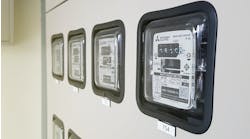Case Study: Norvik Foods uses smart simulation to increase line output by 55%
By Frances Sneddon, CTO at Simul8
Simulation in manufacturing isn’t new. However, many believe it’s only for large-scale companies, requiring huge investment in IT to produce complicated and futuristic models of their operations. The good news, however, is that this is not the case and simulation technology can be used by organizations of any size to zone in on individual processes to find ways to streamline and improve them.
Norvik Foods is a manufacturer that did just that.
Self-styled as ‘home of the Grimsby fishcake’, Norvik Foods is a UK-based food producer specializing in the manufacture of specialty fishcakes since 1948. It has an extensive portfolio of both breaded and bespoke contract processed products. The business’ new owners, having recently been acquired by Meatex, wanted to modernize the plant and its equipment, diversify their product range, and increase product throughput.
Before committing to any large investments, Norvik wanted to evaluate the benefit of bringing in new equipment such as fryers, freezers and storage, optimizing current processes and changing the shift pattern. The team approached manufacturing and industrial consultants Production Support 56 for help. The objectives were:
- New equipment: A lot of the equipment was old and obsolete, other equipment had insufficient capacity and limited capability. Norvik had identified several items of new equipment to upgrade its line.
- New shift patterns: The staff were underutilized for parts of the day, the new owners wanted to identify more efficient shift patterns.
- Evaluate line performance: The new owner wanted to assess the performance of the production line and identify bottlenecks and areas for improvement.
Production Support 56 used Simul8 software to construct a dynamic computer model of Norvik’s fishcake-production process to assess current line performance and identify process bottlenecks and uneven flow. The model was utilized to simulate the addition of new equipment and measure performance.
The simulation offered detailed insight into current production-line performance and identified and quantified where improvement could be made. It calculated that proposed changes to working patterns could increase daily production by 35% and provided a detailed plan to balance the production line with the potential to increase throughput by 55%.
The cost-benefit and payback period of the new equipment was calculated, enabling the new owners to make informed decisions about where to invest.
Tony Vardy, CEO at Norvik Foods, commented, “The assessment PS56 made of our production line has proved to be very useful and informative. Using the model to test various changes and seeing the impact before making the investment has helped us enormously. We will definitely be implementing the recommendations made by the team at PS56.”
James Deane, director at Production Support 56, said, “We are able to support investment decisions with modeling and process improvement before any changes are made in the real-world. If you’re planning on buying new equipment but are unsure that it will give you the advantages you want, simulation is a quick, easy and cost-effective way to compare potential investments.”


